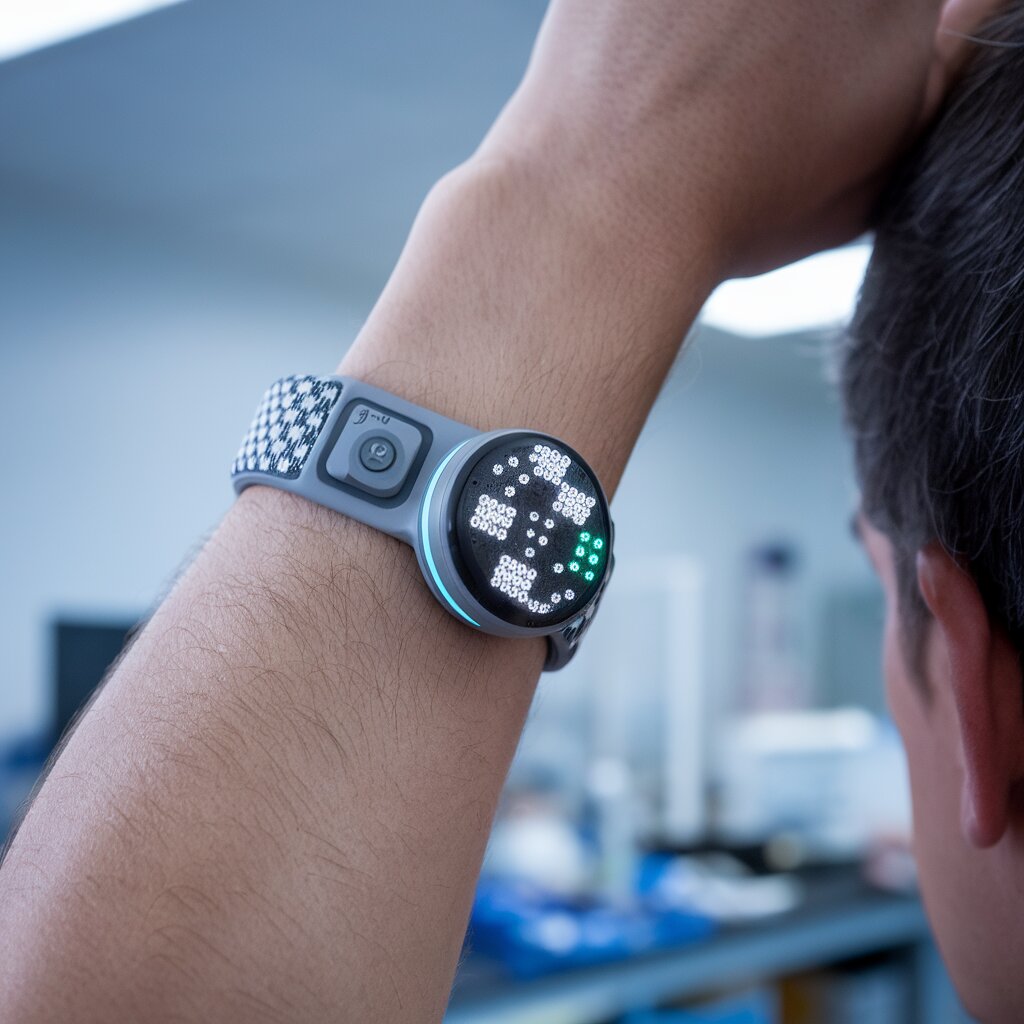In a groundbreaking development, researchers from the University of Houston have unveiled a compact, wearable sensor designed to monitor eye movements with remarkable precision. This innovative device holds the promise of revolutionizing the early detection and diagnosis of a variety of neurological disorders.
The pioneering study, published in the journal Advanced Healthcare Materials, outlines the numerous advantages of this novel technology over traditional eye-tracking methods. Unlike existing systems, which are often bulky, expensive, and dependent on complex computer software for data analysis, this new sensor is small, non-invasive, cost-effective, and capable of continuous monitoring.
“Many brain-related diseases and abnormalities manifest through ocular symptoms, which frequently precede other indications. Thus, eye movements can serve as an alternative diagnostic tool for these conditions,” states lead author Dr. Jae-Hyun Ryou, an associate professor at the University of Houston.
These early ocular symptoms, such as specific blinking patterns, are key indicators of potential neurological issues, including stroke, multiple sclerosis, Parkinson’s disease, and Alzheimer’s disease. While other eye-tracking systems like desktop-mounted or glasses-imbedded setups rely heavily on computer vision, they fall short in terms of portability and affordability. Moreover, they are unsuitable for continuous monitoring.
On the other hand, smartphone cameras and associated applications provide mobile imaging options but are limited to intermittent checks, offering no solution for continuous data collection. This is where the newly designed flexible piezoelectric eye movement sensor array (F-PEMSA) excels.
According to the research, the F-PEMSA can be effortlessly attached to the skin beside the eye. Comprising three sections known as transducers, this sensor adeptly captures tiny muscle movements associated with eye movements and blinks. The segmented design of the sensor facilitates sophisticated movement detection, including directional movements of the eyes, enhancing its diagnostic capabilities.
Initial tests of the prototype demonstrated its effectiveness in detecting both the duration and direction of various eye movements, such as eye rotations. Despite the need for further testing to ensure broader applicability, the device has proven to be durable, comfortable, and safe.
Dr. Ryou expresses optimism about the wide range of clinical applications for the F-PEMSA. “We believe that this sensor can be employed in numerous clinical studies related to brain disorder conditions such as ADHD, autism, Alzheimer’s disease, and Parkinson’s disease, as well as in assessing the aftereffects of traumatic brain injuries like post-concussion syndrome and post-traumatic stress disorder. This innovation could potentially lead to early and accurate diagnoses and pave the way for personalized therapies.”
The introduction of this advanced eye movement sensor marks a significant stride in neurological research, offering hope for early detection and individualized treatment strategies. As this technology continues to evolve, it could become an indispensable tool in the fight against debilitating brain disorders.


